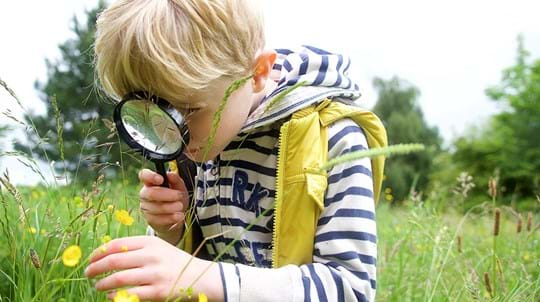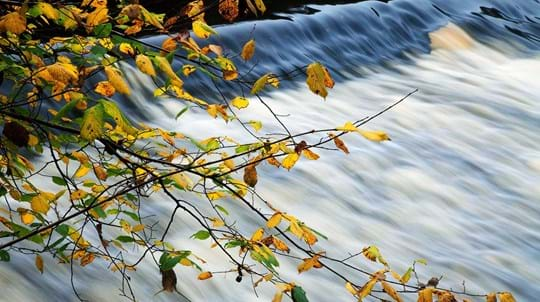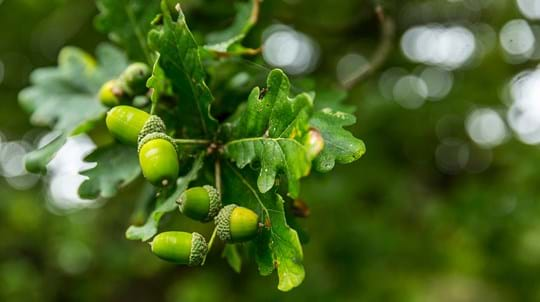
Bilton Beck & Rudding Bottoms
Scotton

Woodland Trust wood
17.11 ha (42.28 acres)
SE307583
Explorer 298
OS Landranger 104
Bilton Beck & Rudding Bottoms sits in the beautiful steep-sided valley of the River Nidd. Featuring a living catalogue of native trees, swathes of wildflowers and over 42 bird species, it’s a great place to enjoy a stroll along the river.
Catch a glimpse of the rare goshawk and a flash of green as a kingfisher darts along the water of the tree-lined lake. Explore the walks, beautiful surroundings and the nearby viaduct.
Features
- Parking nearby
- Public access
- Autumn colour
- Broadleaved woodland
How to get to Bilton Back & Rudding Bottoms
Stretching over 17 hectares (42 acres), Bilton Beck & Rudding Bottoms is situated in the well-wooded Nidd Valley, around 3km (2 miles) north-east of the centre of Harrogate in North Yorkshire.
From the A59 Skipton to Knaresborough road, turn onto Bilton Lane. After around 1.6km (1 mile) there is a small car park on the right-hand side of the road.
Directly opposite the car park, a permissive footpath leads to a dismantled railway line before reaching the wood at Nidd Viaduct. Follow the path to the east of the viaduct to find the riverside public footpath.
The nearest train stations are Starbeck, 2.4km (1.5 miles) away, and Knaresborough, 3.2km (2 miles) away.
Visit National Rail for more information.
The nearest bus stop is near the playing fields on Tennyson Avenue in Bilton, 1.1km (0.7 miles) from the wood.
Visit Traveline for more information.
Facilities and access
Access to the wood from the west is from Bilton Lane and follows the old railway line. This main access route from the car park has a kissing gate at its entrance with a flat, cinder track leading to the viaduct.
Access from the east is via a wooden stile from the riverside footpath, which links into the Trust’s Nidd Gorge Wood. This footpath links to Scotton and to the town of Knaresborough, which is about 5km (3 miles) away. The riverside path is rough in places with steep slopes and steps and can be slippery.
Another route to the woodland uses a public bridleway that leads from the Gardeners Arms, Bilton Lane, heading north through farmland to the wood and riverside footpath.
There is a car park at the main entrance with space for around 15 cars.
There are public toilets in both Knaresborough and Harrogate town centres.
Wildlife and habitats
Animals
Bilton Beck & Rudding Bottoms has an abundance of wildlife, with 42 species of bird recorded here, including kingfisher, the rare goshawk and the goldcrest. Look out for signs of shy roe deer and cheeky grey squirrels.
Trees, plants and fungi
With a mix of both coniferous and broadleaf trees, an assortment of colourful wild flowers and interesting fungi species, Bilton Beck & Rudding Bottoms is a plant lover’s paradise.
Habitats
A mix of broadleaf and conifer species make up Bilton Beck & Rudding Bottoms.
We bought the site in 1985 with help form the Countryside Commission, Harrogate Borough Council, local residents and Trust members.
We clear-felled an eastern area of conifer in 1988, and have been slowly restoring the rest of the woodland since.
About Bilton Beck & Rudding Bottoms
Train line
The site’s most striking landmark is an impressive stone railway viaduct that is 30 metres (98 feet) tall. It was built to carry the railway line between Harrogate and Ripon across the gorge.
The last train rattled over the Nidd way back in the 1960s. Now, the old line provides a level path into woodland from nearby Bilton, called the Nidderdale Greenway. It links Harrogate with Ripley and is a very popular walking and cycling route.

Credit: Jill Jennings / WTML
Scotton Flax Mill
Scotton Flax Mill was opened in 1798. It was powered by water from the river and produced yarn from raw flax to be made into hard-wearing cloth. Situated on the far side of the river, the mill was accessed via the footpath from Old Bilton to the wood. The mill was closed 50 years after opening, and the building is now a private home.
Origin of name
‘Bilton’ is believed to mean ‘the farm belonging to Billa’, while ‘beck’ is an Old Norse word meaning ‘stream’. The kingdom of Northumbria made up a key part of the Viking-controlled area known as the Danelaw, which influenced many place names.
In Old English, ‘rhydding’ means ‘cleared area’, suggesting that Rudding Bottoms was not always wooded. Indeed, we know that at some point before 1850, the sheltered lower slopes – given the name ‘bottoms’ – had been completely cleared and fenced off.
Things to do at Bilton Beck & Rudding Bottoms
Walks
Bilton Beck & Rudding Bottoms is a great place to enjoy a walk. Regular guided walks are run by volunteers at the site.
Volunteering
Bilton Conservation Group’s volunteers meet every month and undertake maintenance and project work in the Nidd Gorge area.
The Nidd Gorge Woodland Working group also meet each month, and the New Nidd Gorge Woodland Volunteer Group runs practical conservation days once a month, led in partnership with Harrogate Borough Council.













































